A day in the life of a Kootenay log hauler
S.M. Quennell Trucking takes one of Kootenay Business magazine’s staff writers on a ride-along
It’s 3:30 a.m. and I’m climbing the steps of a Kenworth T800B logging truck. Coffee in hand, I settle into the passenger’s seat as the engine is put into gear and 475 horses start thundering down the road.
My host for the day is Duke Armleder (and yes, we are related). Armleder is a 57-year-old driver for S.M. Quennell Trucking—based in Wycliffe, B.C.—and he’s been in this position for about four years. Most of Armleder’s hauls have been out of the Cranbrook, Kimberley and Moyie areas, but a log hauler must go where the wood is, so today we are headed to Elkford.
There is little talking at this hour and the only other vehicles on the road are fellow truckers. At 5:15 a.m., we’re off the pavement and travelling down Lower Round Prairie Road, north of Elkford. It is still dark when we arrive at the landing and the lights of the truck ahead of us indicate that we weren’t the only ones who had to get up hours before dawn. If you think truck drivers work crazy hours, just talk to the loaderman; he’s usually the first on site.
Getting loaded up
As soon as the truck ahead pulls out of the way, we are called in for our load. I try to peer through the small rear window of the cab to see what’s going on as we’re being loaded but all I can see is the head of the hydraulic power-clam loader. Like a claw with seven fingers, it brings large bundles of logs down onto our truck and trailer. I am amazed at the dexterity of this machine and its precise placement of each log.
By 7:15 a.m., our load is wrapped and we’re ready to leave the landing. This is where the fun begins. Driving in was a cakewalk, but now—with an extra 43,500 kilograms on the truck and trailer—gear selection is crucial. So is wheel placement. With four axles on the truck and a four-axle quad trailer behind us, we’re a whopping 80 feet long.
Driving a big rig
The big diesel engine growls as we climb the first hill, exhaling at the top as another gear is grabbed and momentum is built for the next hill. It’s rough in the cab and I find myself reaching for something to grab hold of as the truck shifts its weight around the corners.
Sunrise is at 7:30 a.m. today and at the first hints of daylight, the Rocky Mountains and the Elk River explode into view.
By 8:30 a.m., we’re back on the highway. The world is just starting to come to life. There’s more traffic on the highway, and animals like deer and elk are busy grazing in the fields. We’re loaded with whitewood (spruce, pine and balsam fir), so our destination is the Elko sawmill. Each of Canfor’s three mills in the East Kootenay are set up differently to handle specific wood species and sizes. If our payload consisted of redwood (larch and Douglas fir), we’d be taking it to the sawmill in Canal Flats.
Unloading at the sawmill
At 10 a.m., we arrive at the mill and proceed to the scales. A driver must weigh in loaded when he arrives and weigh out empty before he leaves. The difference is the size of his payload.
When we’re unloaded and have weighed out, we proceed to the hydraulic truck hoist. It was the responsibility of the loaderman at the landing to lift our trailer off the truck before loading it. Now it must be lifted back on by the driver himself. Once this task is accomplished, we leave the mill and head back onto the highway.
Back for Round 2
At 1:15 p.m., we’re at the landing, ready for our second load. This time, in the light of day, I can really see what is going on. The truck is now getting loaded with oversized logs that are destined for the sawmill in Radium Hot Springs. In the distance, I hear the rumble of skidders, feller bunchers, processors and logging trucks being loaded at other landings. It’s quite the show and I feel dwarfed in comparison to the size of the equipment as well as the expanse of wilderness around me.
By 2:30 p.m., we’re heading out. This is our last trip of the day. The number of trips depends on the length of the haul cycle; sometimes a driver can manage to haul three loads in a day—but on a typical day, most drivers get two.
Hats off for the day
There is not enough time to take our load to the sawmill in Radium Hot Springs before it closes for the day, so we will have to park it overnight and unload it the following morning. By 6:30 p.m., we’re stepping out of the truck at S.M. Quennell Trucking’s yard in Wycliffe to head home.
Log haulers typically work 12-hour shifts, although a 15-hour day like this one is not unusual. Drivers are home every night and most of them get their weekends off. That being said, harsh road conditions and breakdowns can easily throw a wrench into an otherwise normal day. Such is the life of a Kootenay log hauler!

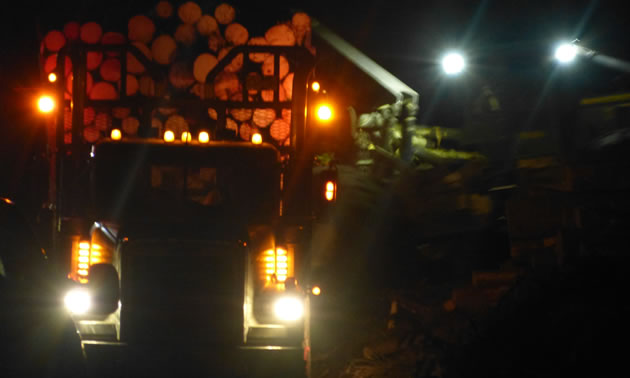
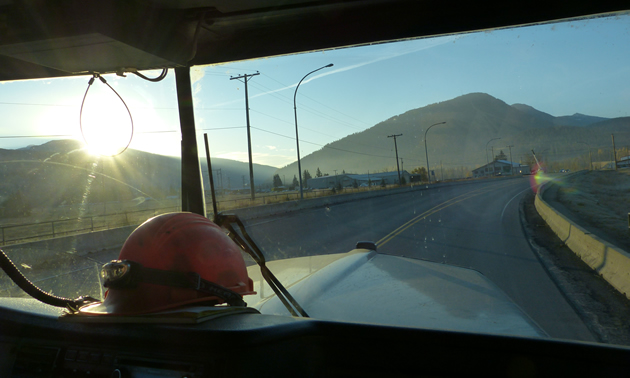
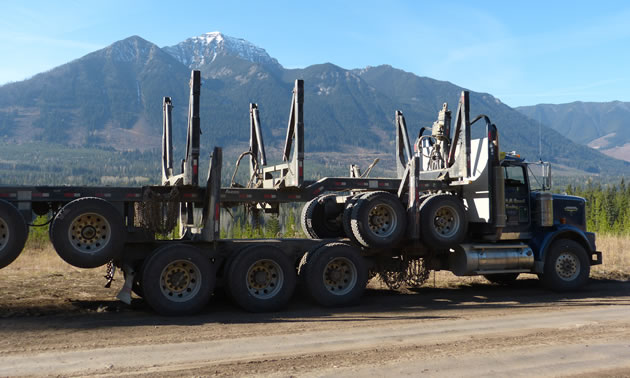
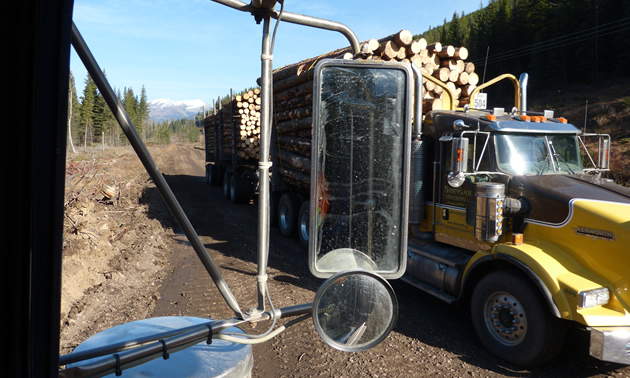
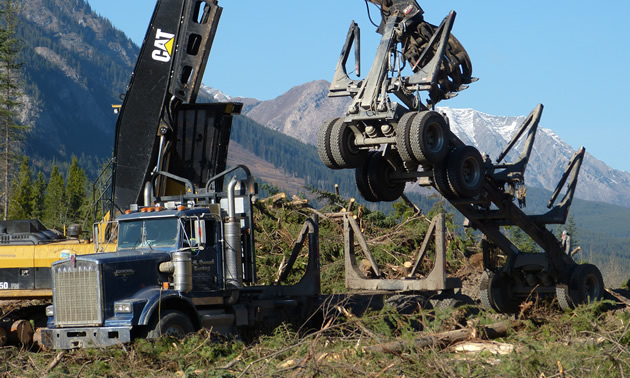
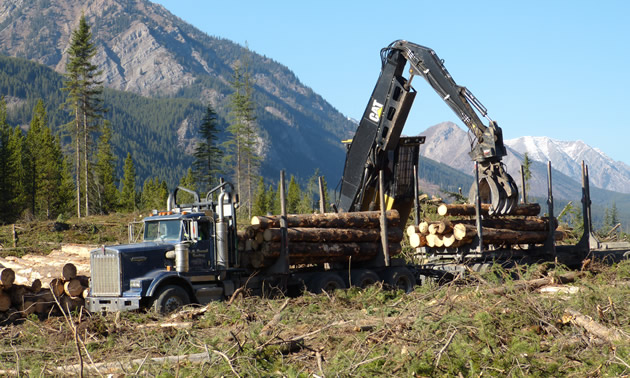
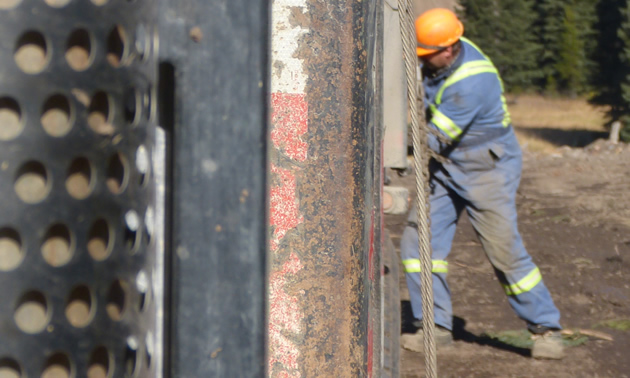
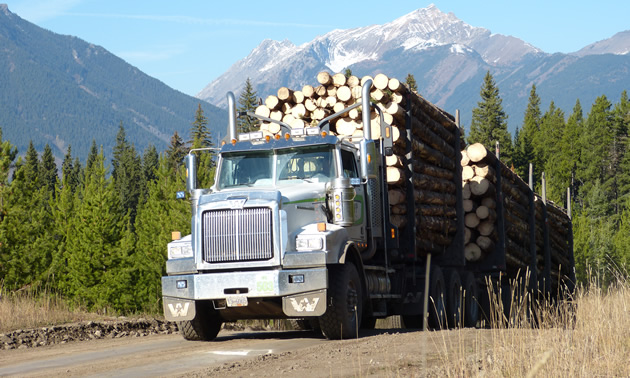


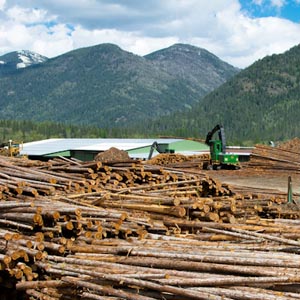


Comments